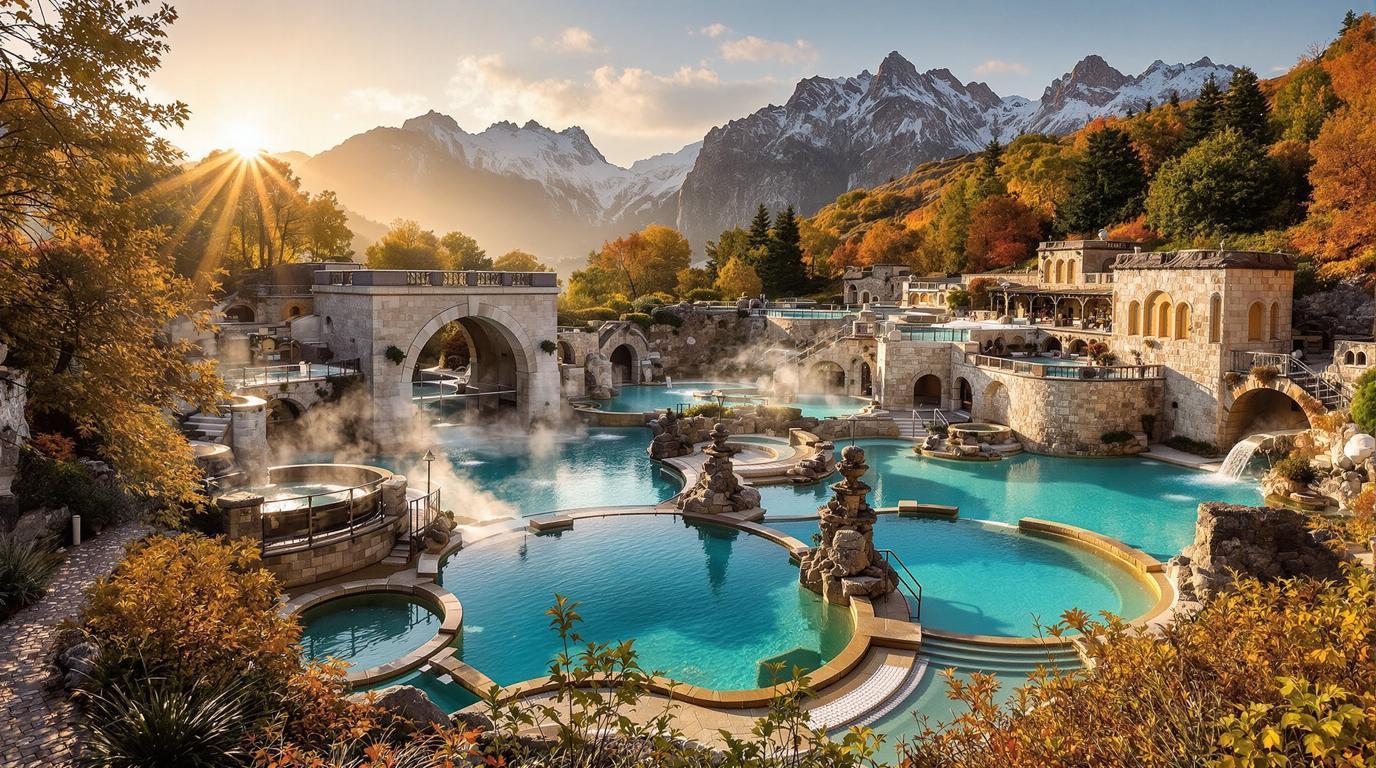Tucked between the Mediterranean Sea and the dramatic foothills of the Pyrenees mountains lies Le Boulou, a French thermal spa town that most American travelers miss while racing toward Barcelona. This hidden gem in France’s Pyrénées-Orientales department offers something increasingly rare in our overshared world: authentic experiences without the Instagram crowds.
A healing tradition dating back to Roman times
Le Boulou’s thermal waters aren’t just another European spa—they’re medically recognized for treating cardiovascular and digestive conditions. Les Thermes du Boulou, the town’s premier spa facility, sits within lush exotic gardens where centuries-old healing practices continue.
“Our waters contain a unique combination of bicarbonate, calcium, and magnesium that can’t be found elsewhere in Europe,” explains Marie Dufour, resident hydrotherapist. “Patients who come for three-week treatments often report significant improvements in conditions that conventional medicine struggled to address.”
Where France and Spain blend in surprising ways
While technically in France, Le Boulou sits just 7 miles from the Spanish border, creating a cultural fusion evident in everything from architecture to cuisine. This proximity to Spain reminds visitors of other border towns with unexpected cultural treasures that offer authentic experiences at fraction of big-city prices.
The marble masterpiece hiding in plain sight
Eglise Sainte-Marie’s unassuming exterior belies its extraordinary treasure: a white marble Romanesque entrance created by the mysterious Master of Cabestany, whose distinctive 12th-century sculptural style appears in only a handful of locations across southern Europe. Art historians travel specifically to see this remarkable work, yet most tourists walk past without a glance.
A town shaped by a forgotten battle
In 1793, Le Boulou witnessed a decisive battle during the War of the Pyrenees. Today, the Maison de l’Histoire commemorates this turning point with exhibits that bring to life the town’s strategic importance. Much like the hidden historical treasures in other French villages, these stories remain largely untold to international visitors.
A gateway to pristine mountain adventures
Le Boulou serves as an ideal base for exploring the rugged Albères massif, where hiking trails lead to panoramic Mediterranean views and hidden medieval ruins. The well-marked Path of the Three Fountains offers a moderate 3-hour loop through cork oak forests and crystalline streams.
For those seeking more dramatic landscapes, the nearby Gorges de la Fou—Europe’s narrowest canyon—offers an unforgettable journey between towering limestone walls that sometimes narrow to just two feet wide. Mountain enthusiasts might recognize similarities to the dramatic topography found in the remote valleys of the Albanian Alps.
Where railway enthusiasts find unexpected delight
Train buffs shouldn’t miss a side trip to nearby Latour-de-Carol, which houses Europe’s only triple-gauge railway station where French, Spanish, and narrow-gauge mountain railways mysteriously converge. This engineering curiosity reflects the region’s position at the crossroads of diverse cultural and technological traditions.
Thermal waters meet modern wellness
Beyond traditional treatments, Le Boulou has embraced contemporary wellness trends. The thermal spa now offers specialized programs combining hydrotherapy with nutrition guidance and stress management techniques—a holistic approach reminiscent of practices found in Europe’s more famous thermal capitals.
The perfect time to visit
September and October offer Le Boulou’s ideal conditions: comfortable 72°F days, minimal crowds, and the added bonus of harvest festivities in surrounding vineyards. During these golden months, the afternoon light bathes the town’s stone buildings in a warm glow that photographers dream about.
As you sip local wine on a café terrace overlooking the Pyrenees, you’ll wonder why more travelers haven’t discovered this thermal town where healing waters, cultural crossroads, and mountain adventures combine to create an experience that feels distinctly, authentically French—yet refreshingly undiscovered.
